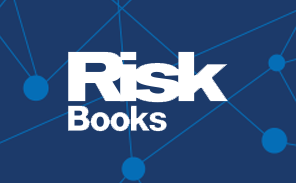Operational risk management: fundamental principles
View AgendaKey reasons to attend
- Learn how to optimise operational risk practices
- Increase effectiveness of core framework tools
- Define and identify emerging risks
Customised solutions
Does your team require a tailored learning solution on this or any other topic?
Working with the portfolio of expert tutors and Risk.net’s editorial team, we can develop and deliver a customised learning to make the most impact for your team, from initial assessment to final review.
About the course
Operational risk management tools and practices have developed during recent market changes and volatility.
Led by subject matter expert and faculty member Elena Pykhova, participants will learn how to use risk assessments as key instruments for op risk management. This session will define and identify emerging risks and discuss how to increase the effectiveness of core framework tools for scenario analysis and op risk losses successfully.
Supported by discussion led examples, participants will explore the importance of an evolving op risk management toolkit. This interactive learning experience will discuss the key principles and best practice approaches necessary for effective operational risk.
Pricing options:
- Early-bird rate: save up to $800 per person by booking in advance (refer to the booking section for the deadline)
- 3-for-2 rate: save over $2,000 by booking a group of three attendees (applicable to this course)
- Subscriber reward: save 30% off the standard rate if you are a Risk.net subscriber (use code SUB30)
- Season tickets: save over $1,000 per person by booking 10 or more tickets (available on selection of courses)
*The 30% subscriber reward discount is applicable only to current Risk.net subscribers. If this criteria is not met, we reserve the right to cancel the booking and issue an invoice for the correct rate. Discounts cannot be applied to already registered participants.
Learning objectives
- Utilise risk assessments as a key instrument of operational risk
- Identify emerging risks based in financial services firms
- Integrate risk and resilience disciplines
- Transition scenario analysis from a traditional to an enhanced approach
- Develop impactful key risk indicators that help in decision-making
- Use key tools and concepts to successfully write reports
- Learn how BCBS 239 would impact op risk
Who should attend
Relevant departments may include but are not limited to:
- Operational risk
- Enterprise risk
- Compliance
- Governance and control
- Audit
- Directors and senior executives
Agenda
March 5–6, 2024
Live online. Timezones: Emea/Americas
Sessions:
- Risk assessments
- Operational risk losses and scenario analysis
- Key risk indicators (KRIs)
- Operational risk appetite
- Operational resilience
- Risk culture, conduct and people risk
- Operational risk reporting
- Softer side: core skills and capabilities of operational risk professionals
View detailed agenda
October 2–3, 2024
Live online. Timezones: Emea/Apac
Sessions:
- Risk assessments
- Operational risk losses and scenario analysis
- Key risk indicators (KRIs)
- Operational risk appetite
- Operational resilience
- Risk culture, conduct and people risk
- Operational risk reporting
- Softer side: core skills and capabilities of operational risk professionals
View detailed agenda
Tutors

Elena Pykhova Risk Learning Faculty
Director and founder
The OpRisk Company
Elena Pykhova is award-winning risk expert, author, international trainer and educator. She is the founder of a boutique risk management consultancy, The OpRisk company, specializing in risk transformation, board and executive level advice on effective operational and enterprise risk management strategy, design and implementation. Elena is an author of a best-selling book, Operational Risk Management in Financial Services: A Practical Guide to Establishing Effective Solutions. She is a renowned educator, running public and in-house training courses in the UK and internationally for world-leading organisations including the London Stock Exchange Group Academy, the Moller Center Cambridge University and the Institute of Internal Auditors. Elena is a thought leader, influencer and founder of a prominent industry think tank, the Best Practice Operational Risk Forum. She is a former Director for Education at the Institute of Operational Risk and chair of the Expert Panel for the Association of Foreign Banks. Passionate about the discipline, she founded her training and consulting practice after 20 years of experience in senior roles at Fortune 500 companies.
Testimonials
“Elena is an excellent, fun and knowledgeable trainer”
“Elena was excellent at providing practical examples.”
“Elena is very knowledgeable and does not only share the information but is also able to explain and answer to question with good examples.”
“Elena is a very knowledgeable speaker…and her presentations keep me engaged throughout”
Accreditation
This course is CPD (Continued Professional Development) accredited. One credit is awarded for every hour of learning at the event.
Pre-reading materials
The Risk.net resources below have been selected to enhance your learning experience:
- Top 10 operational risks: The umpire strikes back - Read article
- A text analysis of operational risk loss descriptions - Read article
- Operational risk and regulatory capital: do public and private banks differ? - Read article
A Risk.net subscription will provide you access to these articles. Alternatively, register for free to read two news articles a month.



